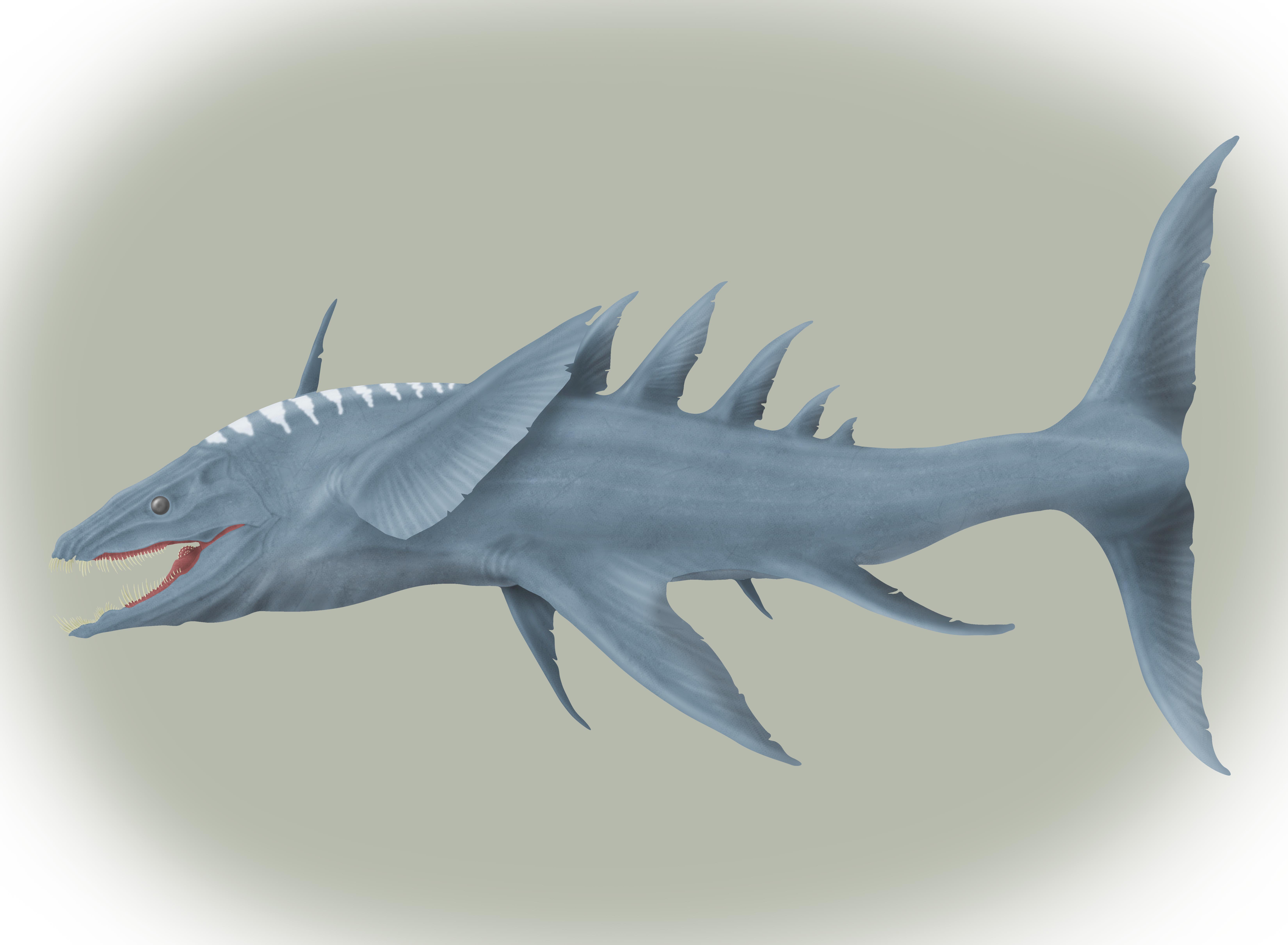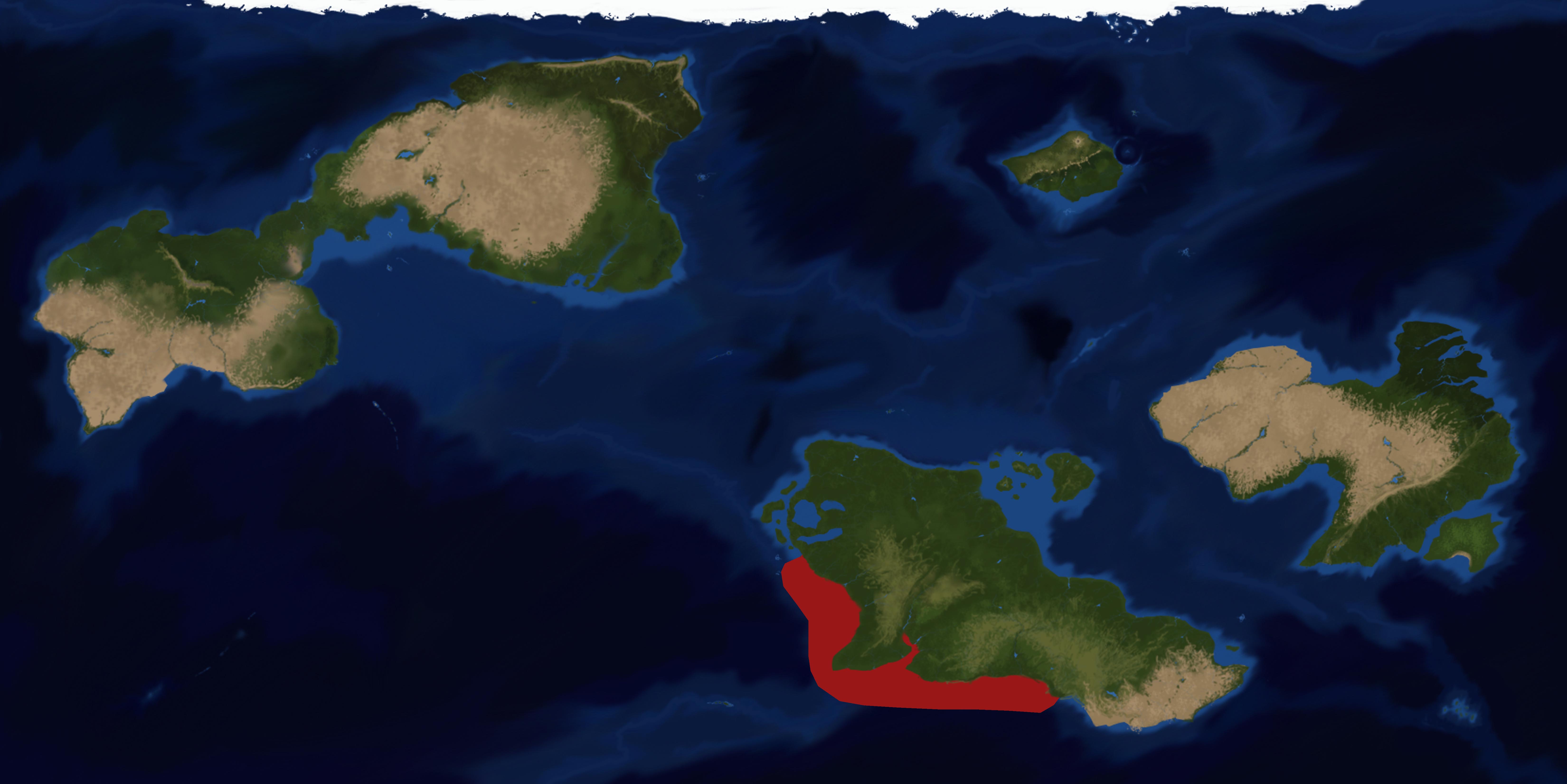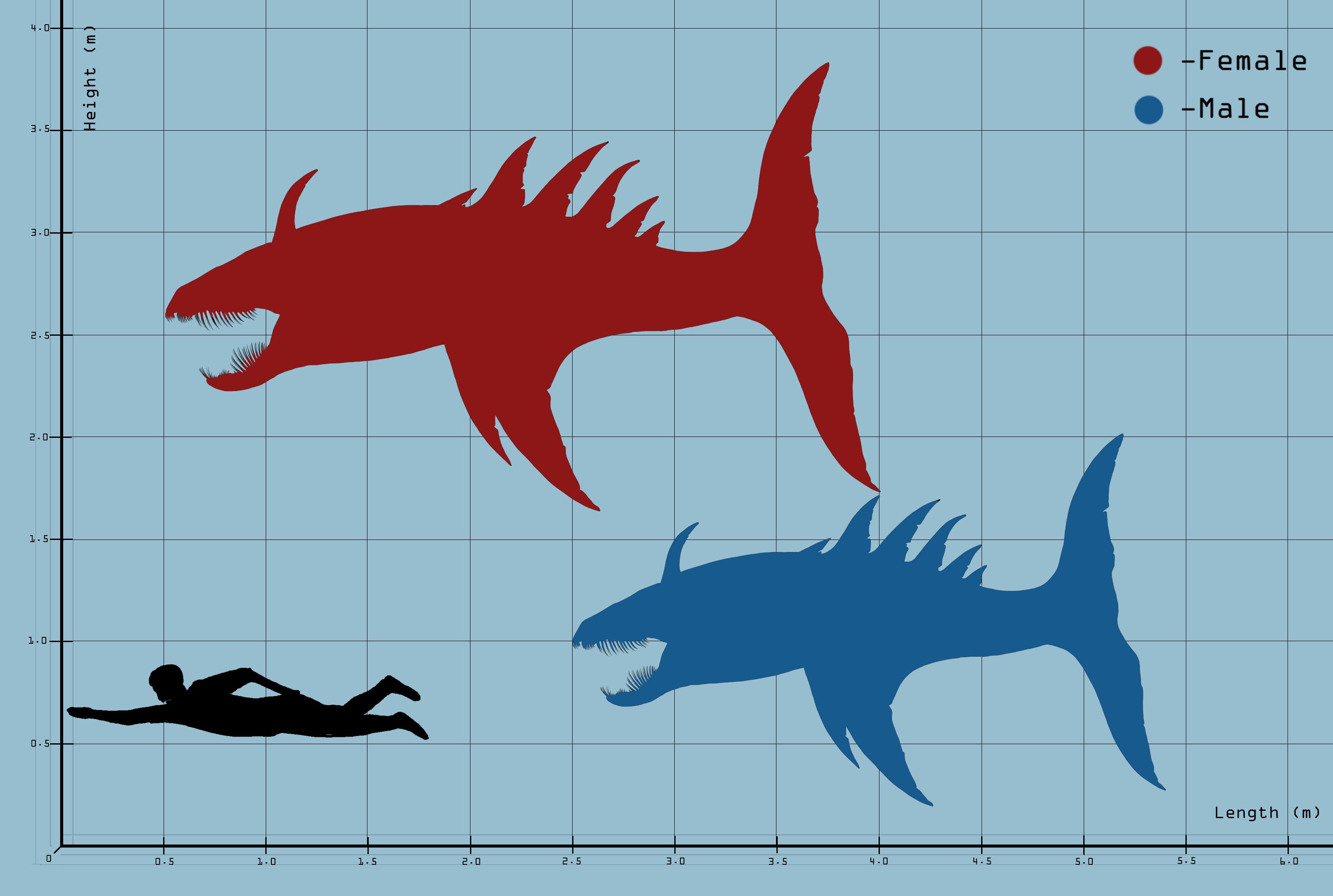Enetodon tremens
Enetodon tremens is one of the biggest representatives of the order Enetodontia as well as one of the few remaining genera to have survived the last megafauna cycle outside of its cousins, the Tubercolosthomatosa.
E. tremens is most commonly known as being the natural predator of animals such as the Crested Ploughead or the oceanic Cristopiscini and Dracopiscini.
The genus name, “Needle Tooth” comes from the shape and functionality of the creature’s teeth, which are hollow and connected to a specialized gland that injects into the prey a powerful acid, digesting it alive.
While being a somewhat scary animal, this amphibian is famous for its friendliness towards humans; it likes to play and follow humans around, gently poking them with the head to encourage divers to play.
In the year 2455, this amphibian was declared critically endangered as the populations declined in response to the damages caused by the O91 crash in December of the same year.
However, hope is not lost as in January 2482 E. tremens was reclassified as endangered thanks to the still ongoing repopulation of the area which saw massive growth in this creature’s numbers.
Basic Information
Anatomy
- Head with a strongly reinforced armour; Small but visible maxillary gap.
- Teeth needle-like, with internal injection duct.
- Sphaera lania reduced and vestigial.
- Pectoral fins large.
- Anal I and II with fused membrane.
- Five dorsal fins starting from the back's midpoint and finishing right before the start of the Gill tail
- Gill tail with a high Gill fan.
- Both caudal fins present and very elongated.
Genetics and Reproduction
Enetodon tremens enters heat during early summer.
Males of the species will build nests on the sandy bottom using the armour of dead plants and amphibians, decorating the nests with bones and underwater fruits using the premaxillary teeth to grab onto the needed materials.
The females will leave the males a couple of weeks to prepare said nests, coming in to rate them on how well managed they are and how many bones and colourful fruits are inside.
Once a female has chosen the partner, it will give him the signal to enter the nest again, by wiggling energetically back the tail and forth from outside the nest; the male will now court the female, swimming under her in circles and looking down, he will extract the parapenis and drag it along the bottom of the nest; the female will rotate in place, keeping her eyes on the male and nodding her head when the male does something shady.
If the courtship is successful the female will point vertically with the body and the male will be able to fertilize her; the fertilization process itself is a dance; male and female, belly to back, will swim towards the surface spiralling several times, detaching one from the other only to return to the bottom and restarting all over.
Nobody knows the reason for this peculiar mating ritual.
A female will incubate her only egg inside the duct for three months, laying the almost hatching egg at the end of the season.
The spawn will be nursed by both parents to adulthood.
The hatching coincides with the reproductive season of the Crested Ploughead, giving the newborn ample resources for its growth.
Until the offspring matures, both the members of the couple will not reproduce, meaning an average couple will reproduce once every four years, one of the reasons these animal's populations have been this fragile since humanity's arrival on the planet.
Growth Rate & Stages
Ontogenesis is almost none existent.
Loss of natal aculeus at two weeks of age.
An average specimen will take five years to reach full adulthood.
Ecology and Habitats
Epipalagic animals found from 0 to 200m deep.
They mostly swim in open waters, sometimes going near the shores.
Dietary Needs and Habits
They hunt in open waters during most of the year where there's more visibility and space to manoeuvre their large bodies; they'll patrol the waters above the bushes in search of an easy meal during their preys mating season.
Sometimes they swim near the shore to forage for fruit and smaller animals, they learnt they can get something to eat near the harbours and other human activities in exchange for a human's chance to freely pet it on the head.
Biological Cycle
An average Enetodon tremens reaches sexual maturity at five years old; sexual sterility not recorded in the wild as of now.
Periannial creatures with little to no change in activity during the year.
Additional Information
Social Structure
In small familiar packs of three most of the time.
Single bachelors.
Small packs with extremely social structures and interactions.
Domestication
Tamed individuals in captivity are used for public entertainement and shows in public aquariums.
Uses, Products & Exploitation
Not many uses outside of the ecotouristic industry.
The teeth are used by some populations on the east of Neygambe as a popular ornament and as a traditional medicine in the south of Gran Koraha; both of these uses are illegal.
Geographic Origin and Distribution
Perception and Sensory Capabilities
Very good sight and echolocatory capabilities.
Symbiotic and Parasitic organisms
Can be affected by Intestinal Tube Worms .
Some specimens recorded with intraocular parasites.
In a commensalistic relationship with various smaller amphibians.
Scientific Name
Enetodontia; Enetodontida ; Enetodon; E. tremens
Lifespan
60 to 70 years
Conservation Status
Endangered: Under protection by maritime laws in both New Japan and the Union.
Population trend: RECOVERING
Average Weight
70 to 300 kg
Body Tint, Colouring and Marking
Bluish-grey body tint with lighter striping on the first half of the back.
Remove these ads. Join the Worldbuilders Guild












Comments